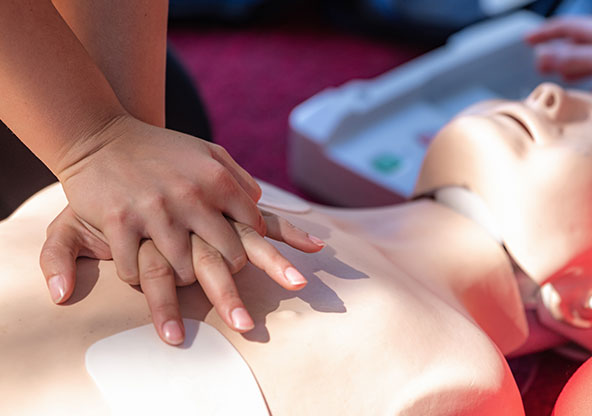CPR: Know the Basics and Local Resources
Cardiopulmonary resuscitation, or CPR, is a skill that can mean the difference between life and death in a cardiac emergency. In many communities, knowing how to perform CPR is vital for the safety and well-being of your neighbors.
Learn more about the importance of CPR and valuable information about local resources for training.
The Importance of CPR
Cardiac arrest can happen to anyone, anywhere, at any time. Every year, many lives are impacted by this sudden and often unexpected medical emergency.
According to The American Heart Association, 350,000 cardiac arrests happen outside of a hospital each year.
The importance of CPR cannot be overstated. It is a simple yet powerful technique that can keep oxygenated blood flowing to vital organs until professional help arrives.
The quicker CPR is initiated, the greater the chances of a positive outcome.
The Basics of CPR
Although CPR is simple, remembering the steps and performing CPR during an emergency can be challenging.
Taking a CPR course can help you build confidence, practice your skills, and further equip yourself to make a meaningful difference and potentially save a life when it matters most.
Here are basic steps to know in case you ever find yourself a bystander during an emergency.
Step 1: Check for Safety
- Ensure that the area is safe for both you and the victim. Look for potential hazards like traffic or fire.
Step 2: Check the person for responsiveness
- Check for responsiveness, breathing, or life-threatening bleeding. If the person appears unresponsive or is not breathing, call 911 or instruct someone else to do so immediately.
Step 3: Begin Chest Compressions
- Place the person on their back on a firm, flat surface
- Place the heel of your hand in the center of the victim's chest
- Give 30 chest compressions: Lock your elbows and use your upper body weight to push your hands hard and fast at a rate of about 100-120 compressions per minute.
- Allow the chest to fully recoil between compressions.
Step 4: Rescue Breaths (If Trained)
- If you are trained and comfortable providing rescue breaths, give 2 rescue breaths after every 30 chest compressions.
- Tilt the victim's head back slightly, pinch their nose, and give a breath -about 1 second long through their mouth--that makes their chest rise.
Step 5: Continue Until Help Arrives
- Continue CPR until professional help arrives or the victim shows signs of life, such as breathing, moving, or responding.
- Remember, even if you're not confident in providing rescue breaths, performing chest compressions alone (Hands-Only CPR) can make a significant difference.
Hands-Only CPR: Making a Difference
Hands-only CPR is a simplified version of CPR that focuses solely on chest compressions.
This technique is easy to remember and can be just as effective as traditional CPR, especially for bystanders who may be hesitant to give rescue breaths.
Research shows that hands-only CPR can increase the chances of survival for someone in cardiac arrest.
Knowing hands-only CPR can be a powerful tool to have in your skillset. It doesn't require formal training and can be initiated immediately in an emergency.
Simply follow the same steps listed above without rescue breaths until professional assistance arrives.
Local CPR Training and Certification
Taking a CPR course is a great way to improve personal preparedness and the safety of your community.
There are numerous resources available for CPR training and certification.
Community Workshops: Many cities or communities offer CPR training courses at venues such as recreation centers, libraries, or other central locations. This is a convenient way to learn CPR in a friendly, local environment. Check with your local community centers for upcoming courses.
Health Care Providers: Hospitals and health care facilities often offer CPR certification courses for individuals and groups. These courses typically include hands-on practice and certification upon completion.
Online CPR Courses: For those with busy schedules or those living in rural areas, online CPR courses can be a flexible and convenient option. Many reputable organizations offer online CPR certification, such as the American Red Cross.
By taking advantage of these resources, you can equip yourself with the knowledge and confidence to perform CPR when it matters most.
Whether you’re a parent, a student, a neighbor, or a passerby, knowing CPR can be your contribution to the safety and well-being of your community.
Take the Heart Risk Assessment
Check Your Risk of Heart Disease
Take our heart assessment to see if you are at risk of heart disease.

